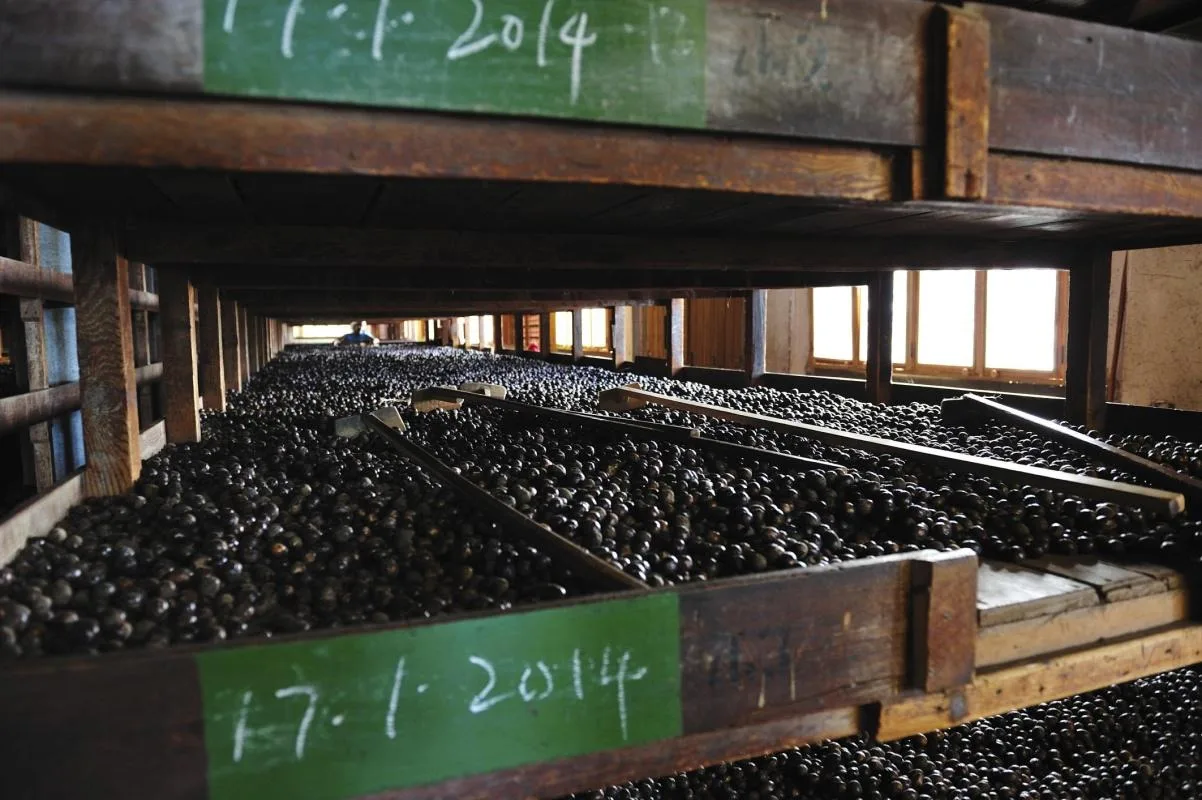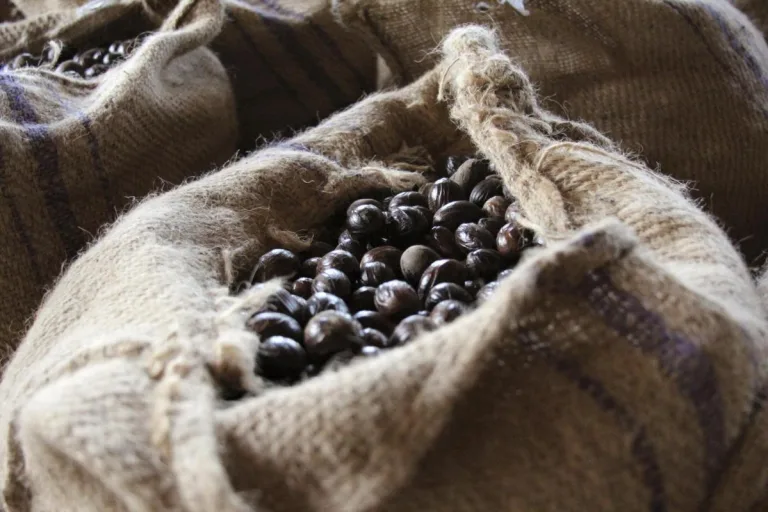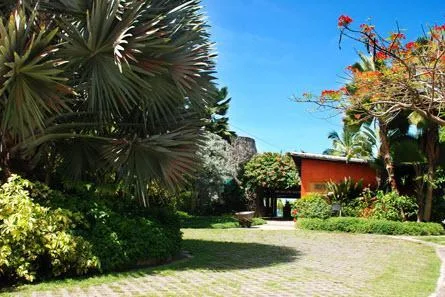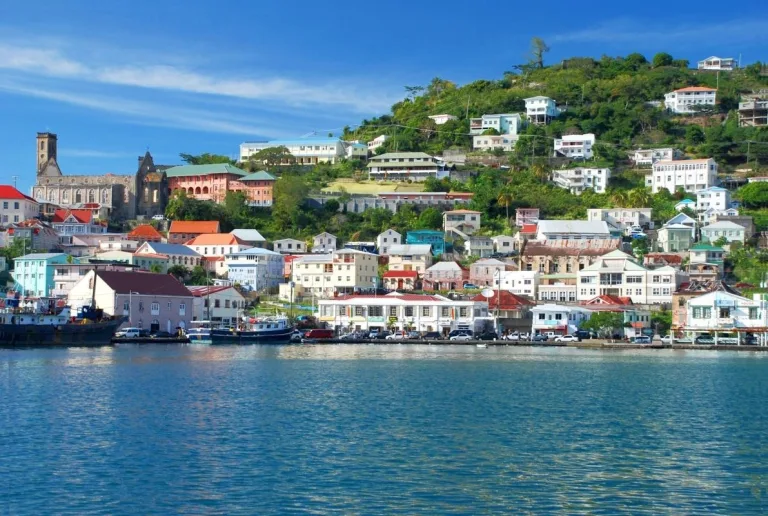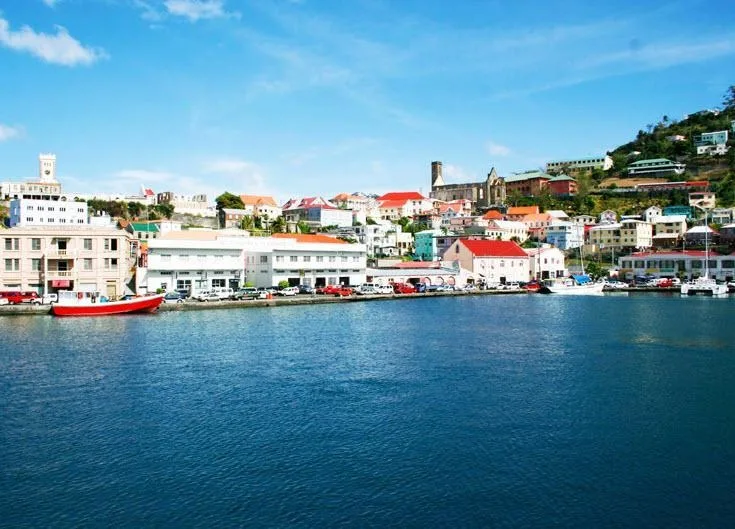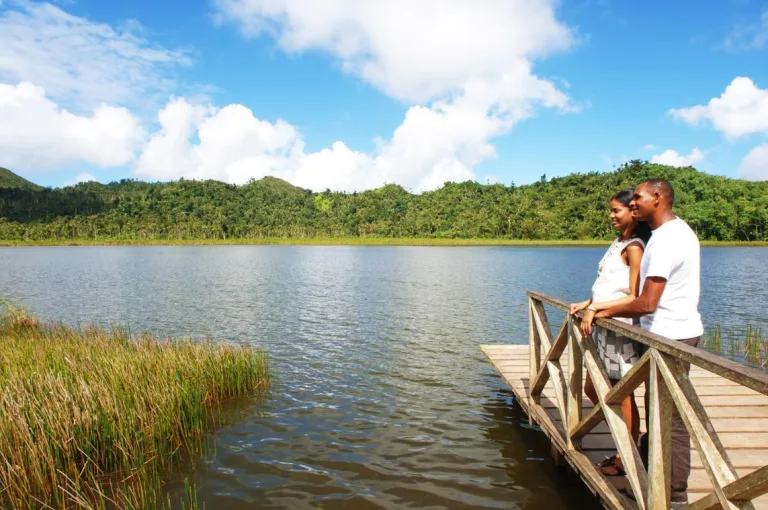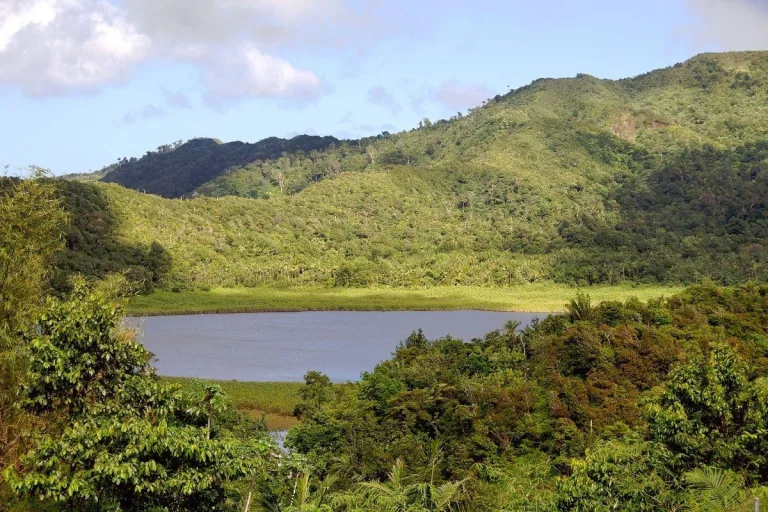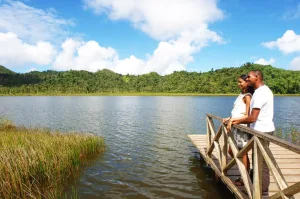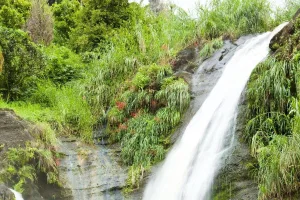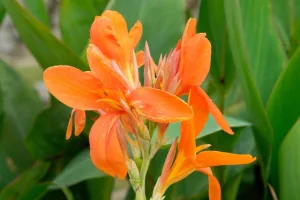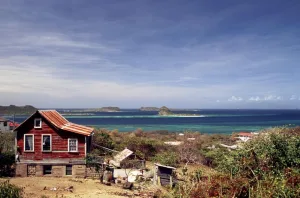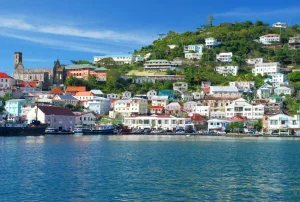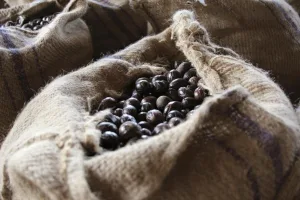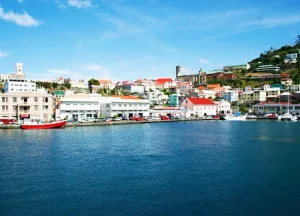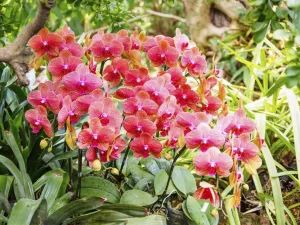If Grenada is known as the “Isle of Spice” then Gouyave should be known as “Nutmeg Village” for its role as the main producer of the island’s most famous spice. Located on the west side of Grenada, Gouyave is a fishing village where the 3-story Gouyave Nutmeg Station churns out three million pounds of the spice each year, for export.
Guided tours of the nutmeg station give visitors the opportunity to see, smell, and taste nutmeg while learning about its many uses. See the nutmeg fruit in its raw form, then watch and learn how it is picked and processed, sorted by hand, and packed to ship worldwide. The nutmeg fruit is soaked, allowing for seed separation from the pod, which is then dried for six to eight weeks and sorted for size and quality. The station also sells local jute bags of nutmeg with custom labeling.
- The factory tour is short so guided tours typically combine the station with other attractions like the nearby waterfalls.
- Before Hurricane Ivan hit the island in 2004, Grenada was processing around nine million pounds of nutmeg.
- The nutmeg station is a must-visit for foodies.
- Locals spread nutmeg shells in their gardens to control weeds.
Gouyave Nutmeg Station is located on Palmiste Lane in the center of the Gouyave village on Grenada. Guided tours typically provide round-trip transportation from island hotels. It’s about a 40-minute drive from St. George’s and the cruise ship terminal. Buses are available from St. George’s to Gouyave; the ride offers great views as you travel up the west coast.
The Gouyave Nutmeg Station is closed on the weekends. Overall, the best time to visit Grenada is from January to April, when it is driest. Foodies may want to plan their visit around the Grenada Chocolate Festival, which takes place at the end of May, since cocoa and nutmeg are two of Grenada’s biggest crops.
St. George’s waterfront promenade, known as the Carenage, is home to the local spice market. Here, visit vendors selling cinnamon, cloves, ginger, bay leaf, turmeric, and nutmeg. It is open daily but Saturday mornings are the busiest; this is when farmers from around the island set up shop. The inlet also features shops, seafood restaurants, and cafés.

